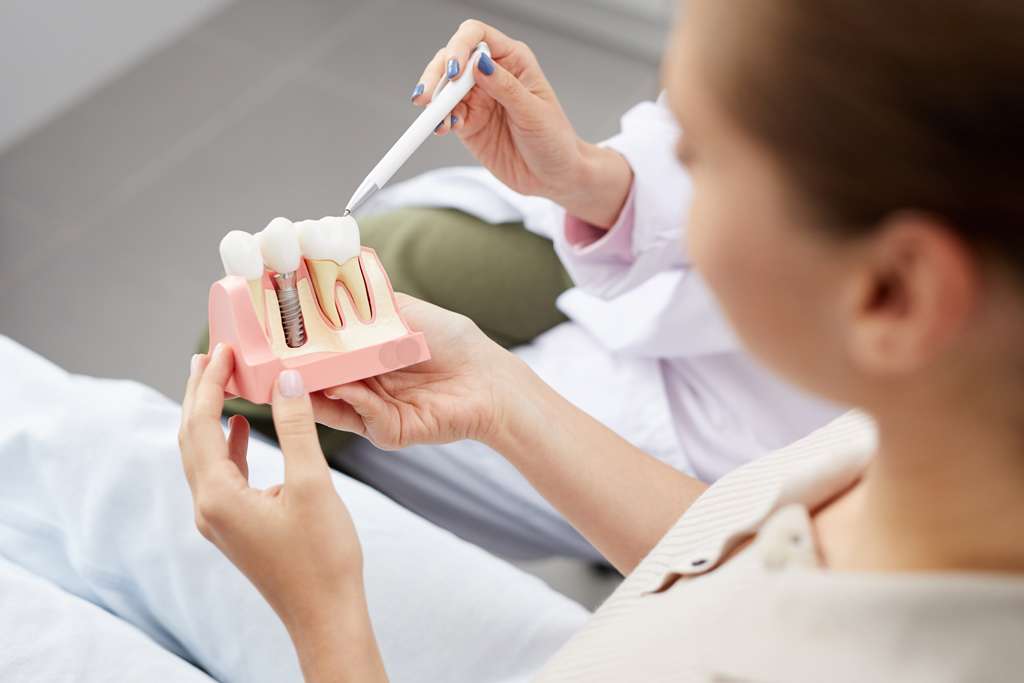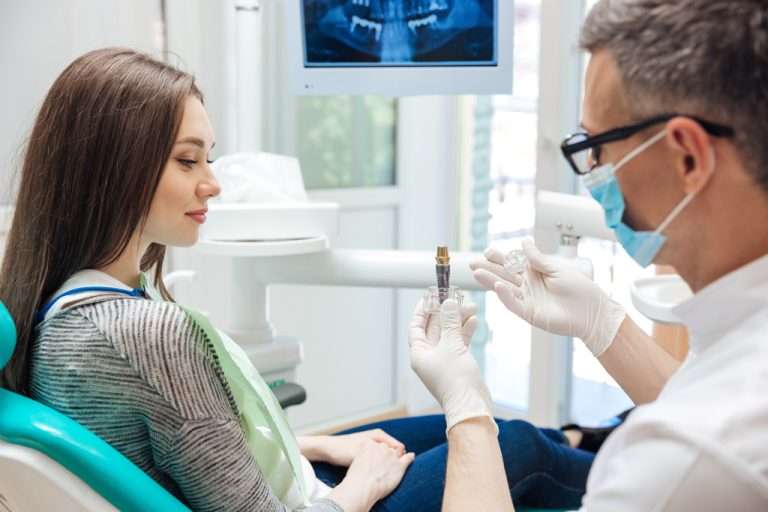By Dr. Jaime R. Estrella, DDS – TruSmile Dental Implant Center
Dental implants have come a long way since their introduction decades ago. Thanks to cutting-edge technology, today’s implant procedures are faster, safer, more accurate, and more comfortable than ever before.
At TruSmile Dental Implant Center, we pride ourselves on using the latest innovations to ensure optimal results for every patient. Let’s explore the technologies that are revolutionizing implant dentistry and how they enhance your experience and outcomes.
1. Cone Beam CT (CBCT) Scanning
Traditional X-rays offer only two-dimensional views. Cone Beam Computed Tomography (CBCT) provides 3D imaging of your jawbone, nerves, sinus cavities, and surrounding structures.
This allows us to:
- Precisely measure bone density
- Locate optimal implant placement sites
- Avoid critical anatomical structures
- Plan with surgical precision
A 2014 study in Clinical Oral Implants Research found CBCT imaging significantly enhances implant success by improving diagnostics and reducing complications [1].
2. Digital Implant Planning Software
Advanced digital software allows us to map your entire implant procedure before a single incision is made. Using your CBCT scan, we virtually place the implant in the exact angle, depth, and position needed for long-term success.
This technology:
- Minimizes surgical error
- Reduces procedure time
- Enhances patient outcomes and satisfaction
3. Computer-Guided Implant Surgery
Once planning is complete, we use surgical guides—custom-fabricated templates that guide implant placement during surgery. This ensures unparalleled accuracy compared to freehand placement.
According to a meta-analysis published in the International Journal of Implant Dentistry, guided surgery improves placement precision and reduces post-operative complications [2].
4. Intraoral Scanners for Impressions
Forget messy impression trays. We use intraoral digital scanners to capture high-resolution 3D images of your mouth. These scans are more accurate and comfortable for patients and help create better-fitting restorations.
Digital impressions also speed up the lab process, allowing for quicker turnaround on crowns, bridges, or full-arch prosthetics.
5. CAD/CAM Restorations
Computer-Aided Design and Manufacturing (CAD/CAM) allows us to create custom crowns and bridges with extreme accuracy. Using your digital scan, the restoration is milled from durable ceramic materials that mimic the appearance and strength of natural teeth.
Research shows CAD/CAM restorations offer excellent long-term aesthetics, durability, and fit—making them ideal for implant-supported restorations [3].
6. 3D Printing for Surgical Guides and Models
3D printing enables us to fabricate:
- Patient-specific surgical guides
- Custom implant models
- Immediate provisional restorations
This technology enhances efficiency and allows for same-day or next-day treatment in many cases.
7. Immediate Load Implants and All-on-4® Technology
In many cases, patients no longer need to wait months before receiving their final teeth. With immediate load protocols, a full arch can be placed on the same day as implant surgery.
One of the most well-known examples is the All-on-4® approach, which has been shown to reduce treatment time while maintaining long-term stability [4].
Why Technology Matters to You
Incorporating these technologies doesn’t just improve clinical accuracy—it also leads to:
- Shorter treatment times
- Less discomfort and fewer complications
- Better aesthetic outcomes
- Long-term success and stability
At TruSmile, our commitment to technology ensures that every implant case—from simple to complex—is handled with confidence and precision.
Final Thoughts
Modern implant dentistry is a blend of art, science, and technology. By leveraging the most advanced tools available, we’re able to deliver the kind of results that change lives.
Ready to explore high-tech dental implants in a comfortable, patient-centered setting? Schedule your consultation at TruSmile Dental Implant Center today.
References:
- Bornstein, M. M., et al. (2014). Systematic review on the accuracy of cone-beam computed tomography in implant dentistry. Clinical Oral Implants Research, 25(4), 416–431.
- Tahmaseb, A., et al. (2014). A systematic review of computer-guided implant placement: accuracy, clinical outcomes, and cost-effectiveness. International Journal of Oral & Maxillofacial Implants, 29(Suppl), 93–109.
- Reich, S., et al. (2011). Clinical fit of all-ceramic crowns fabricated using CAD/CAM technology. Journal of Prosthetic Dentistry, 106(6), 346–354.
- Malo, P., de Araújo Nobre, M., Lopes, A., et al. (2016). Immediate function of implant-supported fixed prostheses for edentulous jaws: A retrospective clinical study with up to 10 years of follow-up. Journal of Prosthodontics, 25(7), 577–585.


